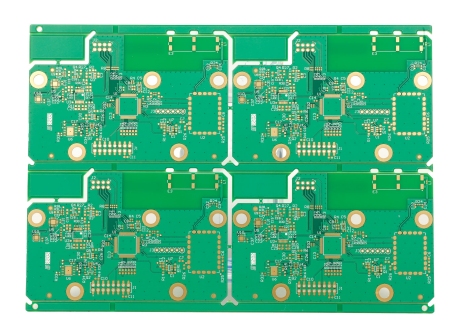Categories
Recent Posts
PCB board is a very important part of the electronics industry and is often used in various electrical equipment and instruments. One of the core properties is temperature resistance. So what is the maximum temperature resistance of the board in the PCBA processing plant? Let's take a closer look below.
1. Temperature resistance of PCB board
The temperature resistance of the board produced by PCB means that under high temperature environment, the board will not be embrittled, cracked, deformed and so on. Therefore, the temperature resistance of the board is very important.
Usually, the temperature resistance of PCB processing is affected by multiple factors such as materials, manufacturing processes, and circuit structures. Among them, the material is the main factor affecting the temperature resistance of the PCB board.
Second, the temperature resistance of commonly used materials for PCB boards
1. FR-4 material
FR-4 is a glass fiber reinforced epoxy material commonly used in PCBA manufacturing . The temperature resistance of FR-4 materials is usually around 130°C. Exceeding this temperature will cause the board to deform or fail.
Due to the advantages of low manufacturing cost, high cost performance, and good processability, FR-4 materials are also widely used in the high-end electrical industry and have passed the test of long-term practice. However, for high temperature applications, the temperature resistance of FR-4 materials is not enough.
2. High temperature FR-4 material
High Temperature FR-4 is a glass fiber reinforced epoxy material specially designed for high temperature environments. Compared with FR-4 materials, high-temperature FR-4 materials have better temperature resistance and can withstand temperatures as high as 150°C.
Although the manufacturing cost of high-temperature FR-4 is relatively high, its reliability in high-temperature environments is far superior to that of general FR-4, so it has been widely used in the high-end electrical equipment industry.

3. Polyimide material
Polyimide is a high-performance insulating material with excellent high temperature resistance, chemical corrosion resistance, and electromagnetic wave interference resistance. It is one of several materials with the best high temperature resistance on the market at present, and can withstand high temperatures above 380°C. Very few brands of polyimide materials can even withstand high temperatures above 500°C.
At present, polyimide materials are mainly used in aerospace, military industry and high-precision temperature measurement equipment and other fields. Although polyimide material is expensive, its reliability in high temperature environment is unmatched by other materials.
3. Conclusion
To sum up, the maximum temperature resistance of PCB factory boards can reach more than 500°C, depending on the materials used for the board. For general electrical equipment and instruments, our commonly used materials are FR-4 or high-temperature FR-4, which can meet most application requirements. However, in some special applications, such as aerospace, military and other industries, it is necessary to use high-performance materials such as polyimide.
Therefore, when selecting Printed Circuit Board materials, it is necessary to select the material type and temperature resistance level according to the actual application to ensure that the circuit board has good reliability and stability in a high temperature environment.